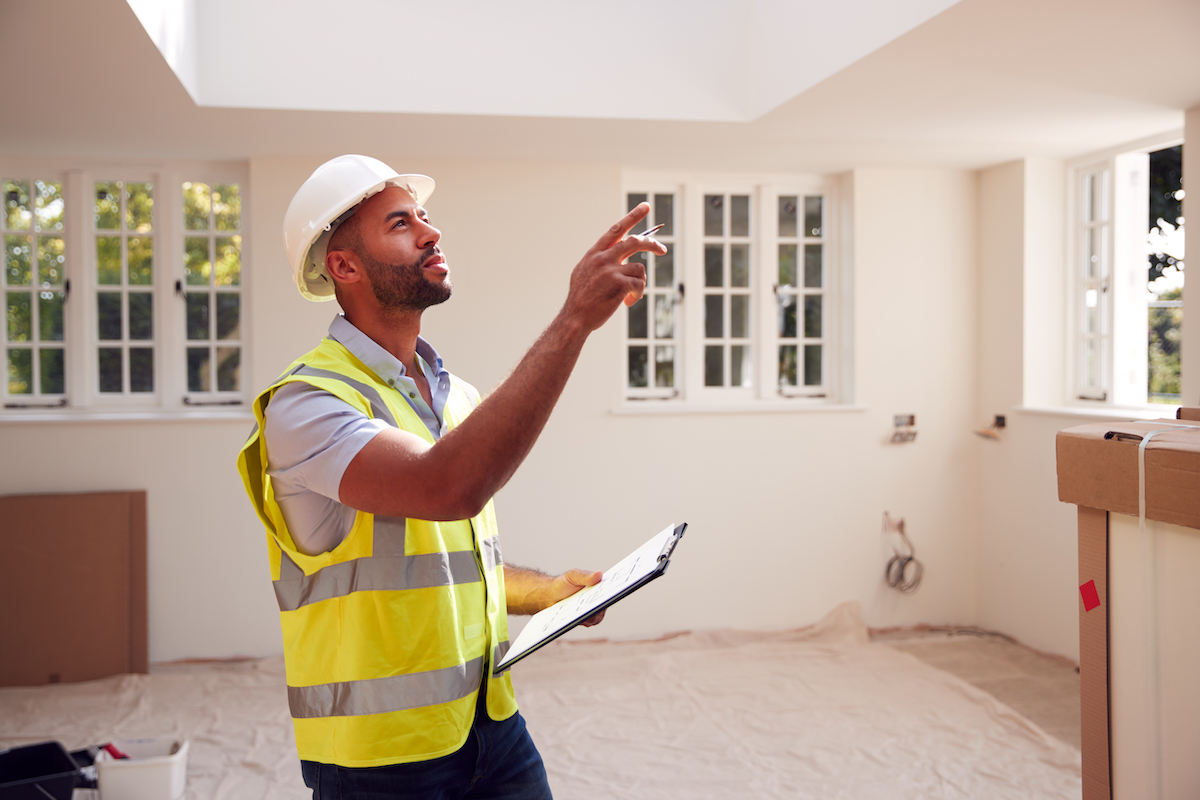What to Get Out Of Home Assessment: a Thorough Checklist and Its Value
Comprehending what to anticipate from a home evaluation is vital for both purchasers and vendors in the property market. A comprehensive inspection provides an in-depth checklist that evaluates key elements such as architectural stability, major systems, and general residential or commercial property condition. This procedure not just reveals potential covert problems but likewise plays a considerable function in discussing reasonable terms (Home Inspection Lockhart). As we check out the details of this list and its wider ramifications, it comes to be clear that the risks are high-- how can you guarantee you are well-prepared for what lies in advance?

Importance of Home Inspections
The value of home evaluations can not be overemphasized, as they offer as a critical guard for both purchasers and sellers in the realty market. For purchasers, a home inspection gives an objective analysis of the property's condition, revealing possible issues that might not be noticeable during an informal walkthrough. This procedure aids purchasers make notified choices and bargain repair work or rate modifications prior to closing, inevitably safeguarding their financial investment.
Conversely, sellers can benefit from home evaluations by addressing problems proactively before noting their property. This can boost the home's bankability and potentially speed up the sales procedure. A pre-listing evaluation can also impart self-confidence in possible purchasers, as it demonstrates openness and a commitment to keeping the residential or commercial property.
Moreover, home inspections add to the overall security and habitability of houses. By determining architectural, electric, or plumbing problems, they ensure that homes abide by safety standards and regulations. This not just protects the occupants but additionally supports the honesty of the realty market. In recap, home assessments are an important element of property purchases, supplying crucial insights that foster depend on and openness amongst all parties entailed.
Key Parts of the Checklist
A thorough home inspection checklist incorporates numerous vital parts that guarantee a detailed assessment of a property's problem. The initial element is the structural honesty, that includes the examination of the structure, wall surfaces, and roof for any type of indicators of damages or degeneration. Next, the checklist addresses significant systems such as pipes, electrical, and HVAC, examining their performance and safety.
One more vital area is the exterior of the home, which involves checking exterior siding, windows, doors, and roofing materials for wear and prospective leaks. The list also covers interior aspects, consisting of floor covering, wall surfaces, ceilings, and insulation, to determine any concerns that might affect comfort or safety.
Furthermore, the list frequently includes an examination of appliances, ensuring they are in excellent functioning order. Lastly, the evaluation ought to analyze exterior rooms, including driveways, patio areas, and decks, to examine their condition and security. Each of these parts plays a vital function in supplying an extensive understanding of the building, ultimately assisting possible buyers in making notified choices concerning their investment.
Typical Concerns Located
Commonly, home inspections reveal a selection of problems that can range from minor repair services to considerable security problems. One widespread concern is the existence of water damage, usually stemming from dripping roofings, pipes failures, or inadequate water drainage systems. Such damage can cause mold and mildew growth, which poses health and wellness dangers and may need extensive removal.

Another typical searching for includes electric systems. Obsolete electrical wiring, overloaded circuits, or inappropriate grounding can create fire threats and require immediate interest. Additionally, problems with cooling and heating systems, such as inadequate maintenance or age-related inefficiencies, can impact comfort and power costs.
Structural issues like cracked structures or jeopardized framing are additionally often kept in mind. These issues can result in significant effects if not attended to promptly. Bugs such as termites or rodents might be discovered, suggesting the potential for significant residential or commercial property damage.
Finally, the condition of doors and home windows commonly comes under scrutiny. Poor seals can cause energy loss, while harmed frameworks or glass can impact security and visual appeals. Determining these common concerns throughout a home assessment is vital for notified decision-making and ensuring the safety and security and durability of the building.
Getting Ready For the Inspection
Preparation is essential for an effective home inspection, guaranteeing that both purchasers and vendors can navigate the process with self-confidence. Begin by setting up the assessment at a mutually convenient time, enabling appropriate accessibility to the residential or commercial property. For sellers, it is a good idea to declutter and clean up the home extensively, as a neat setting can favorably affect the inspector's evaluation.

For purchasers, preparing requires compiling a list of certain issues or locations of rate of interest to talk about More about the author with the inspector. By taking these primary steps, both parties can establish the stage for a effective and complete Web Site home evaluation experience.
Post-Inspection Actions
After the examination is full, both customers and sellers have to take certain activities to resolve the searchings for. For buyers, the primary step is to carefully assess the evaluation report, noting any type of major concerns that may influence their choice. This document functions as a crucial tool for negotiation. Purchasers might request repair work or credits from the seller based on significant problems, such as obsolete systems or structural issues.
Sellers, on the other hand, should examine the searchings for to figure out which issues they can address before settling the sale. Taking care of small repair work can improve the residential or commercial property's charm and potentially bring about a higher price. Sellers might pick to reveal concerns to possible purchasers, promoting openness and count on.
In instances where considerable repair services are needed, both events might profit from obtaining price quotes or quotes from qualified specialists. This permits notified conversations pertaining to repair work responsibilities. Lastly, it is vital for both vendors and customers to maintain open lines of communication throughout this procedure to ensure a smooth transaction. By taking these post-inspection actions, both celebrations can navigate the settlement landscape with confidence and quality.
Final Thought
Home assessments serve as an important part in the real estate deal procedure, ensuring a comprehensive examination of a building's condition. Ultimately, the relevance of home assessments can not be overstated, as they promote notified decision-making and contribute to a smoother real estate experience.
For purchasers, a home inspection provides a neutral examination of the residential or commercial property's condition, revealing possible issues that may not be noticeable during their website a casual walkthrough.Alternatively, sellers can benefit from home inspections by attending to problems proactively prior to providing their residential property (Home Inspection Lockhart).Typically, home examinations reveal a variety of issues that can vary from small repair work to substantial safety and security problems. Recognizing these typical problems during a home assessment is vital for informed decision-making and guaranteeing the safety and security and long life of the residential or commercial property
Prep work is crucial for a successful home assessment, making sure that both buyers and sellers can browse the procedure with confidence.